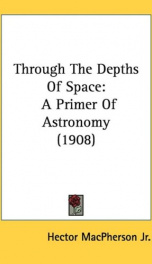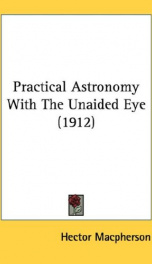astronomers of to day and their work

Purchase of this book includes free trial access to www.million-books.com where you can read more than a million books for free. This is an OCR edition with typos. Excerpt from book: the planets. In the spectrum of Saturn he recognised unmistakable traces of aqueous vapour. M. Janssen's name is inseparably associated with the observation of solar eclipses, for which purpose he has travelled over the world. His eclipse observations have been of the utmost value and have yielded important discoveries. In 1867 he observed an annular eclipse of the Sun, in Italy, but his greatest observation was made in 1868, when he discovered, independently of Sir Norman Lockyer, the spectroscopic method of observing the solar prominences in full daylight. To observe the "red flames" of the Sun, or solar prominences, during the total solar eclipse of August 18, 1868, M. Janssen was stationed at Guntoor, in India. The morning of the eclipse was not perfectly clear, and the atmospheric conditions not particularly good, but M. Janssen persisted in his observations and observed the spectrum of the solar prominences, which was composed of bright lines, proving that these prominences were masses of glowing gas. During the progress of the eclipse, M. Janssen was specially struck by the brilliancy of the bright lines from the prominences. The idea accordingly struck him that the spectrum of the prominences might be observed even when the Sun is not eclipsed. As Proctor remarks in his work on "The Sun": "The light of the prominences, when dispersed by the spectroscope, forms a few lines; that of the illuminated terrestrial atmosphere is spread out into the rainbow-tinted solar spectrum. Therefore if we only use adequate dispersive power, we can cause the prominence lines to show conspicuously on the background of dispersed atmospheric light." During the progress of the eclipse, as we have remarked, the idea of observing the prominences in daylight occurred to M. Janssen, but aft...
Info about the book
Author:
Series:
Unknown
ISBN:
1440065284
Rating:
4.5/5 (2)Your rating:
0/5
Languge:
English
Users who have this book
Users who want this book
What readers are saying
What do you think? Write your own comment on this book!
write a commentif you like astronomers of to day and their work try:
Other books by this author
Do you want to exchange books? It’s EASY!
Get registered and find other users who want to give their favourite books to good hands!






